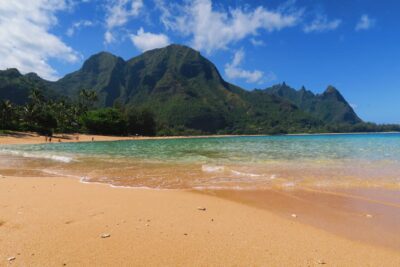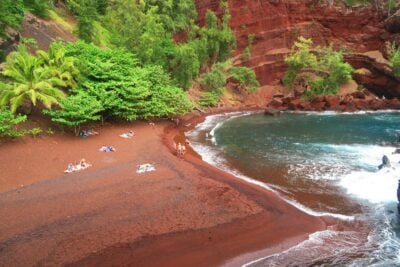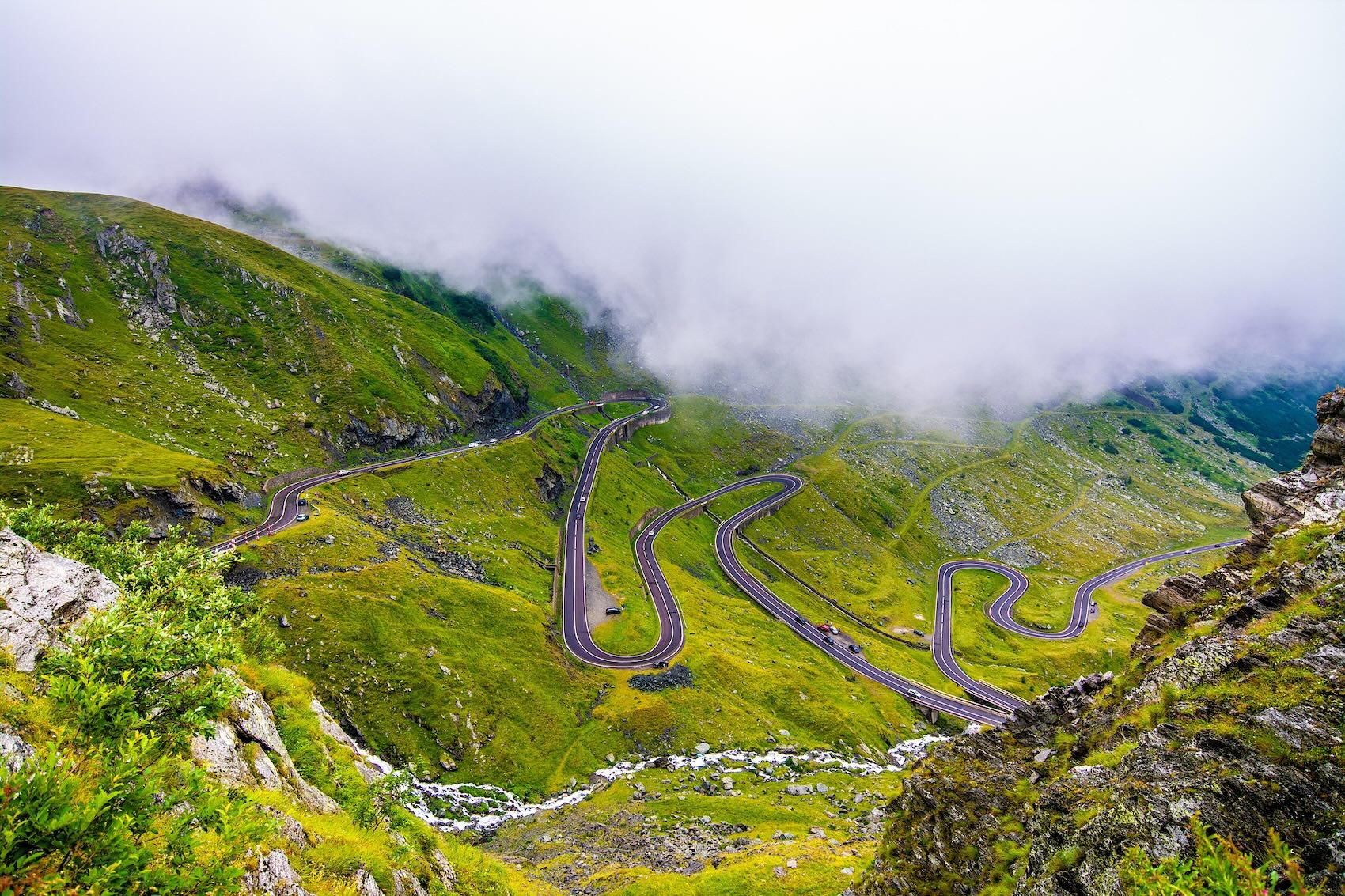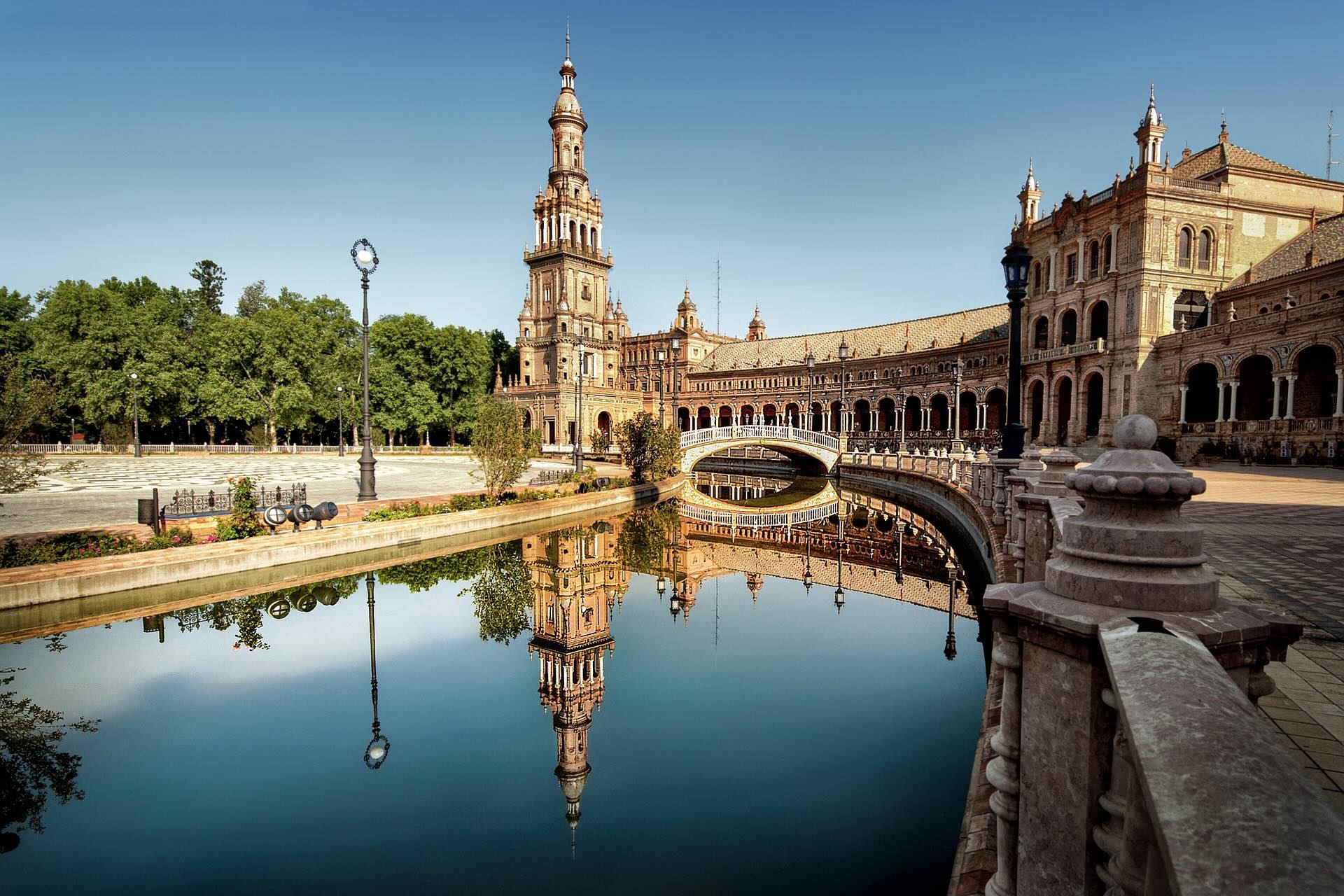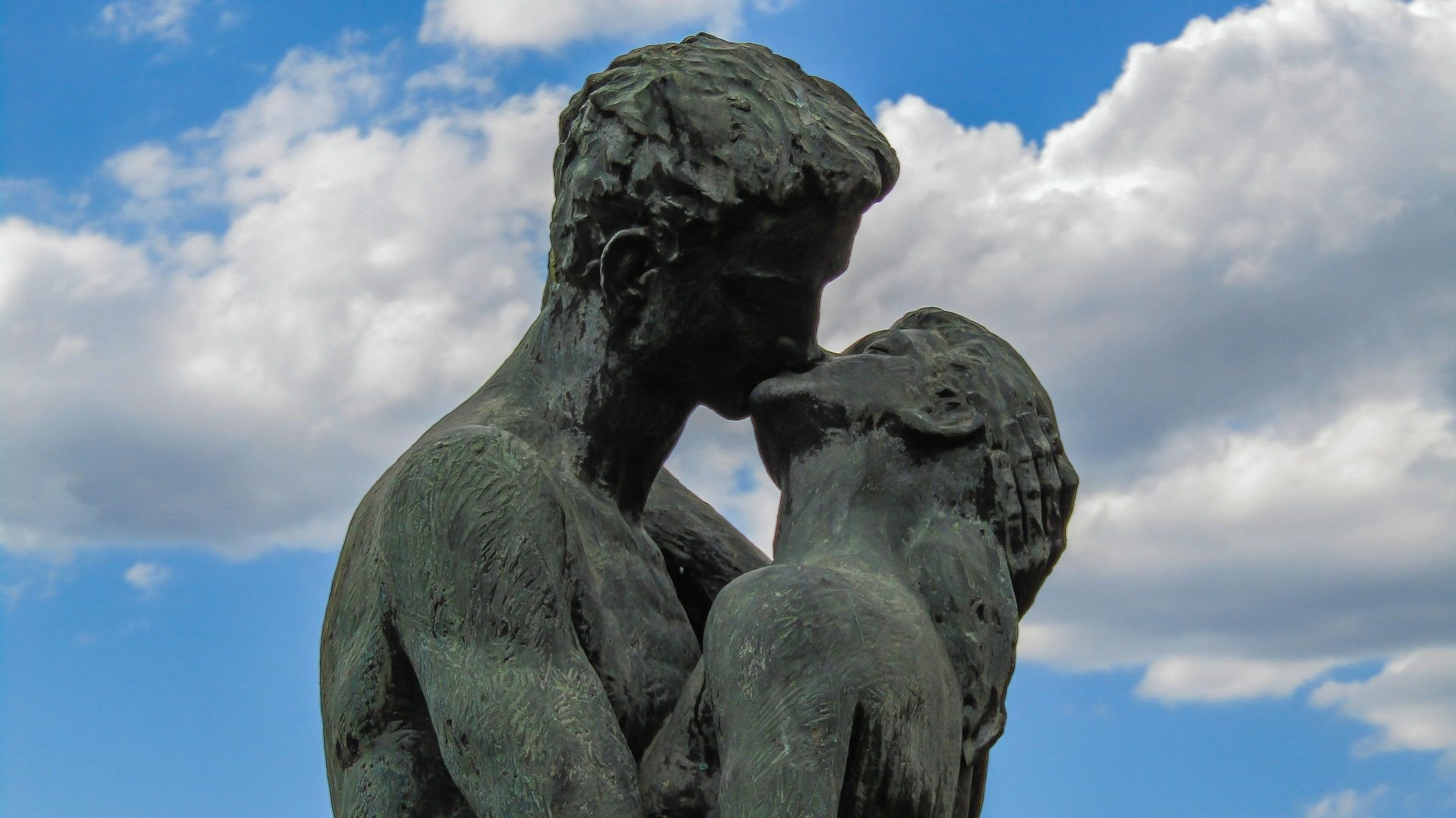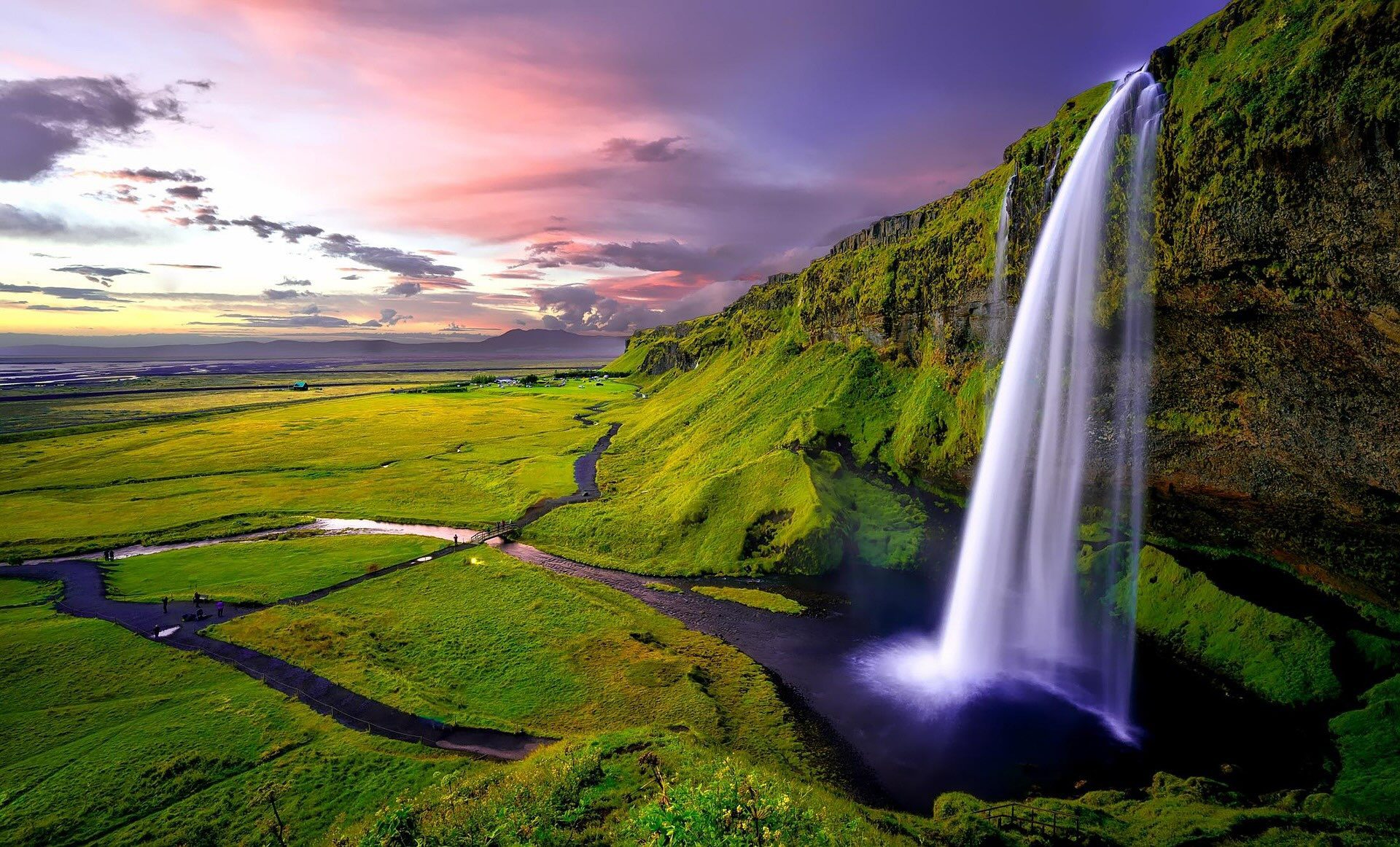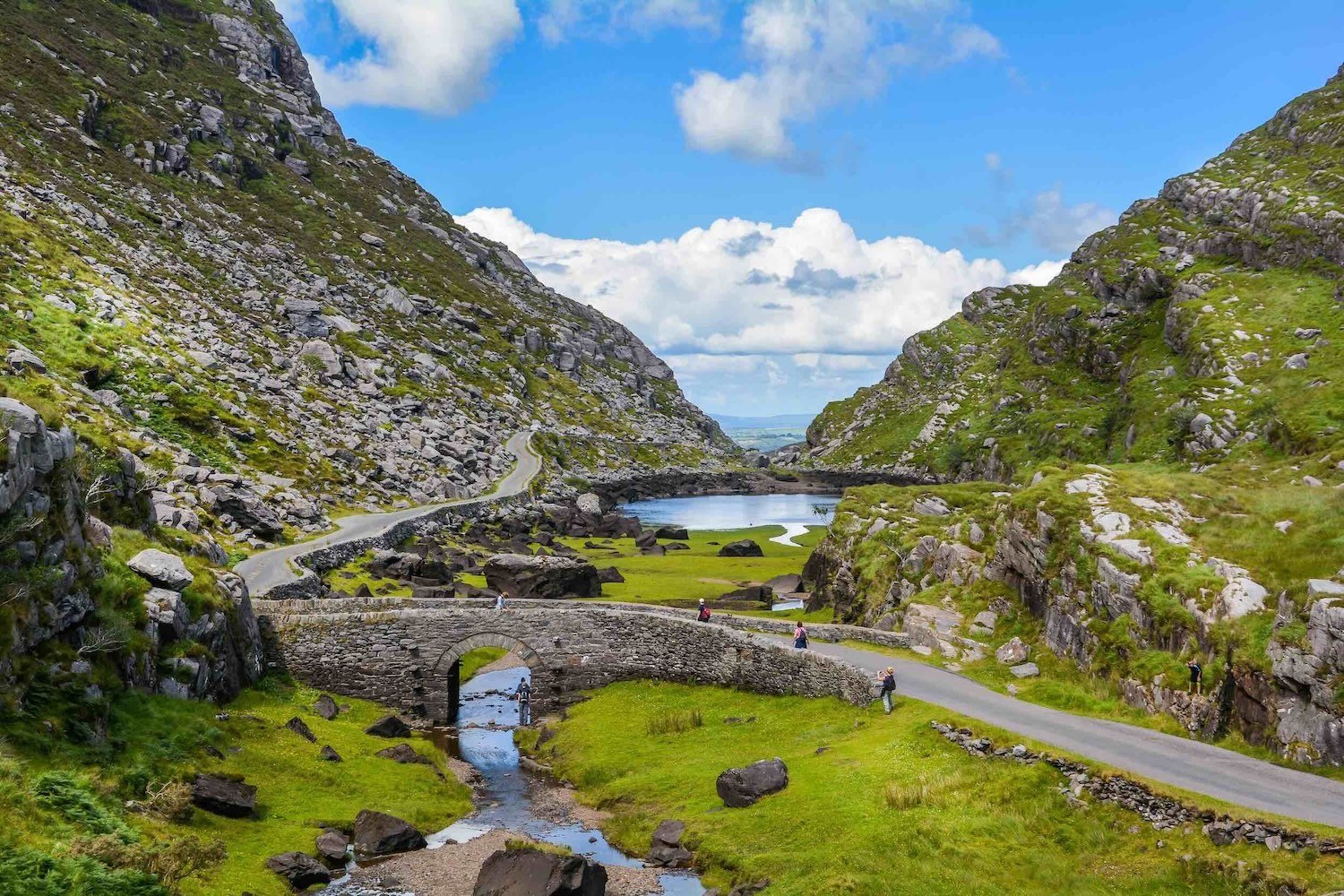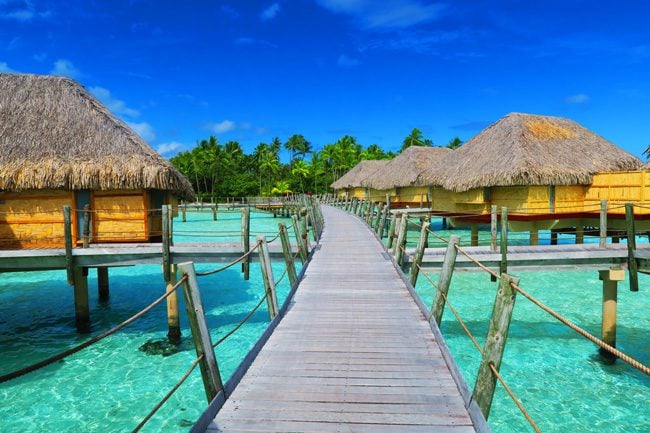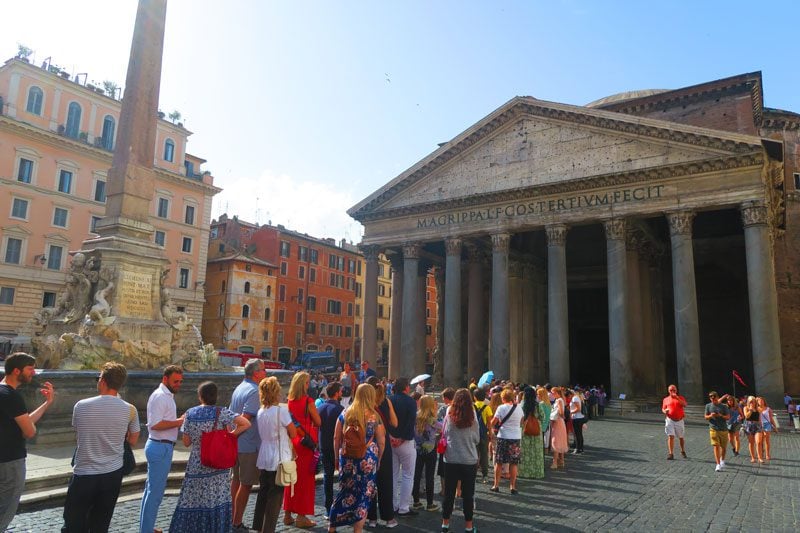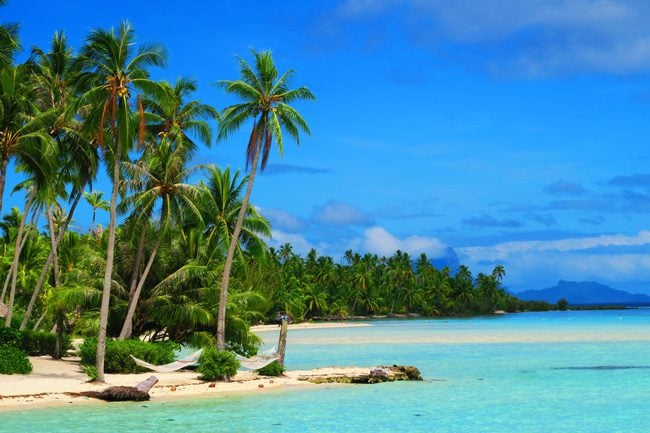5 Days In Molokai itinerary
Day 2: Kalaupapa Peninsula & Leper Colony
This Molokai itinerary uncovers one of Hawaii’s most fascinating tales on the second day. We’ll explore the remote Kalaupapa Peninsula, home to a former leper colony still somewhat in use today. Get your history books and hiking shoes ready!
Background
In the most inaccessible part of the most isolated of the (main) Hawaiian Islands lies the Kalaupapa Peninsula. Meaning “flat-leaf”, the peninsula is squeezed by the majestic Pali Coast – the tallest sea cliffs in the world – and the Pacific Ocean. The peninsula is a place of dramatic natural beauty and the site of a tragic episode in modern Hawaiian history. To curb the spread of the leprosy virus and under mounting pressure from wealthy sugar plantation owners who feared a dwindling labor supply, King Kamehameha V signed legislation to designate this isolated spot as a permanent quarantine area for patients of leprosy from across the Hawaiian Islands.
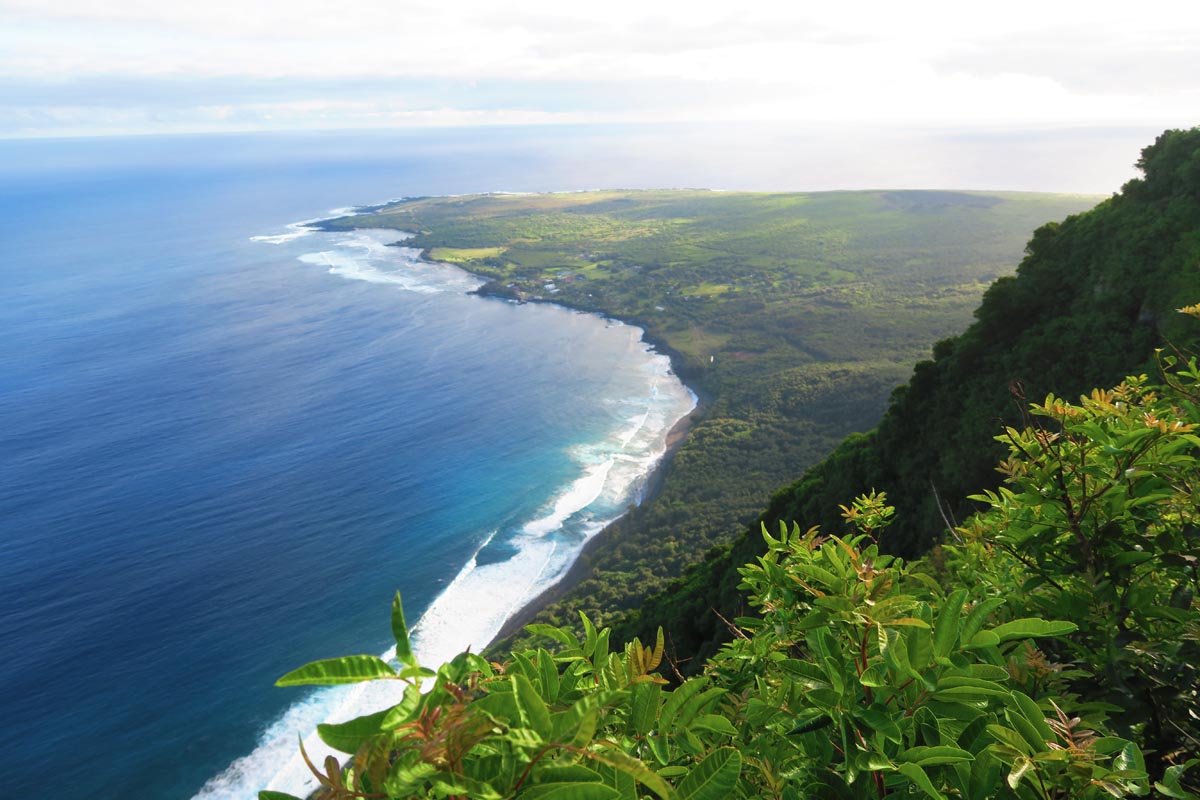
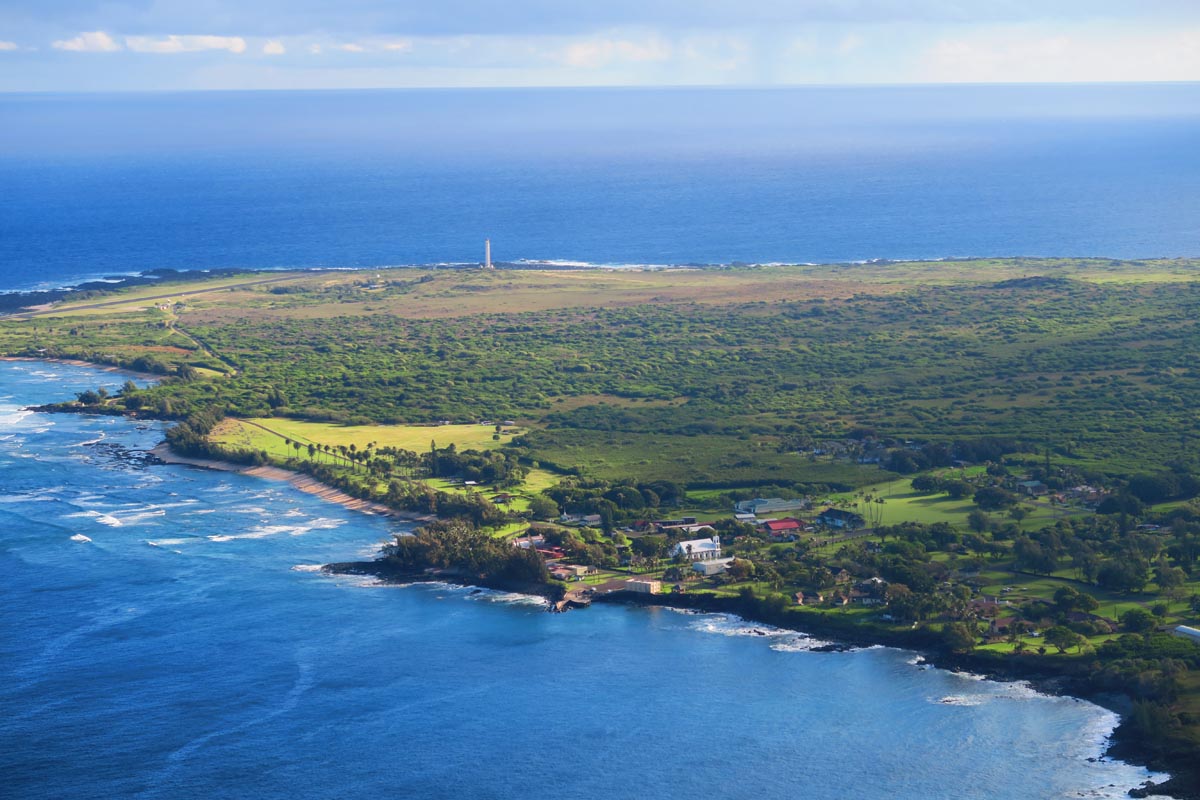
From 1866 to 1969, about 8,500 patients called this place home, forced to leave their islands, their families, and even their children behind in the case of adults. Living conditions were appalling during the first few years, with patients having little medical care or adequate facilities.
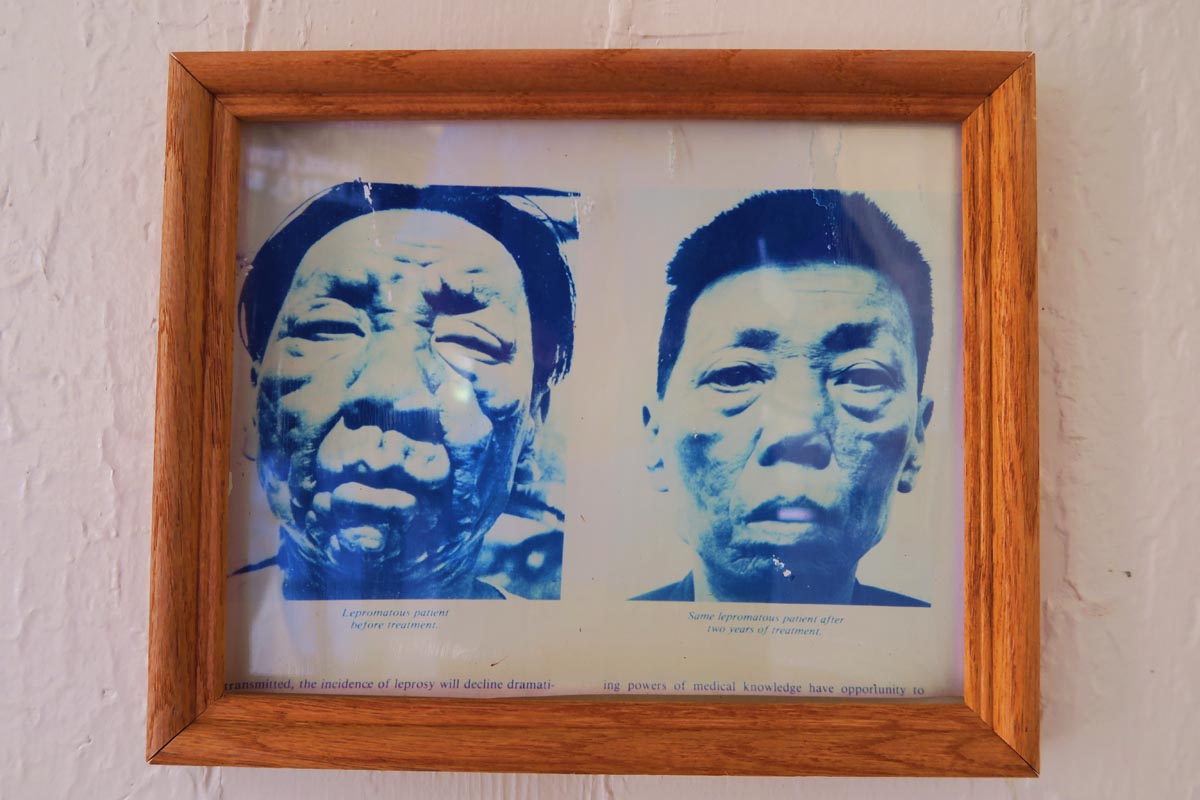
Father Damien
That all began to change with the arrival of Belgian-born Father Damien (now St. Damien) and later Mother Marianne, Joseph Dutton, and several other good souls who cared for the patients, washed their wounds, provided schooling, and even created a rich social scene (theatrical plays, sporting activities, parades, and even a working dairy farm).
Ironically and tragically, Father Damien contracted the leprosy virus in Kalaupapa, eventually succumbing to the disease for which a cure was ultimately discovered in the 1940s. You can say many things about the church, but here’s an example of something good: a story of compassion and sacrifice when nobody else cared.
Kaluapapa Today
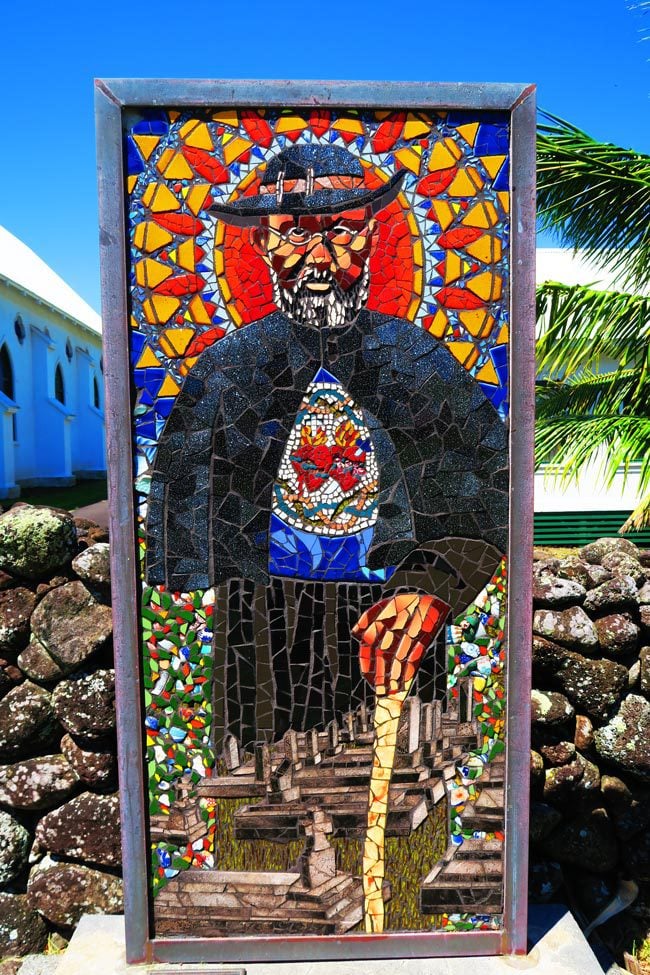
The cure for leprosy (known as Hansen’s Disease in the politically correct lingo) made the need for a quarantine zone obsolete, turning the tides for the colony and leading to a very happy end. Patients were now free to leave and return home, but some chose to stay. Kalaupapa was their home, and, well, the million-dollar views probably helped tip the scales. With their status changed from “patients” to “residents”, the government took over and has tried ever since to make up for all those “lost years”. Residents were awarded some degree of self-governing autonomy (their own county, for example), healthcare, meals, modern infrastructure such as super-fast internet, and even a post office. Heck, even Amazon delivers! A real mini-utopia.
These days, only about a dozen or so resident patients live in Kalaupapa, which has become a National Historical Park. Visiting the former leper colony is a must-do activity in Molokai, not only for its natural beauty but also for the feeling of visiting a forbidden place (even Hollywood made a film about its story).
Visiting Kalaupapa is a bit tricky so let’s start with the logistics of the day before exploring the peninsula.
-
- Entering the Kalaupapa Peninsula is only permitted with an official permit and as part of a guided tour. Hiking without a permit is an offense and the privacy of residents is taken very seriously around here.
-
- Overnight stays are only permitted for guests of residents and volunteers in the National Park (the latter is a good idea if you wish to spend a few nights in this magical place).
-
- No children under the age of 16 can enter the peninsula. This draconian rule stems out of respect and remembrance of the fact that patients could not bring their children with them when forced to relocate here back in the day.
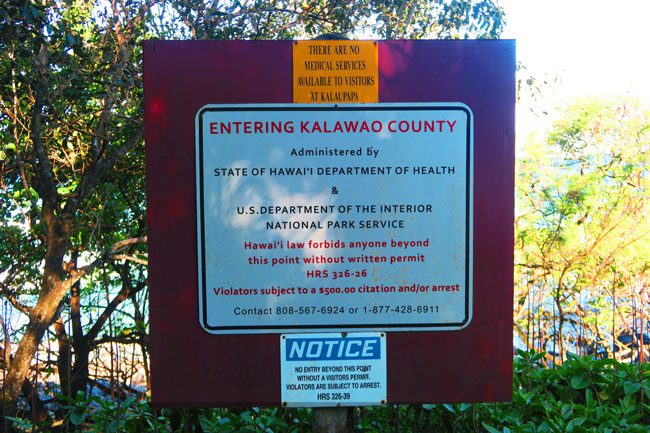
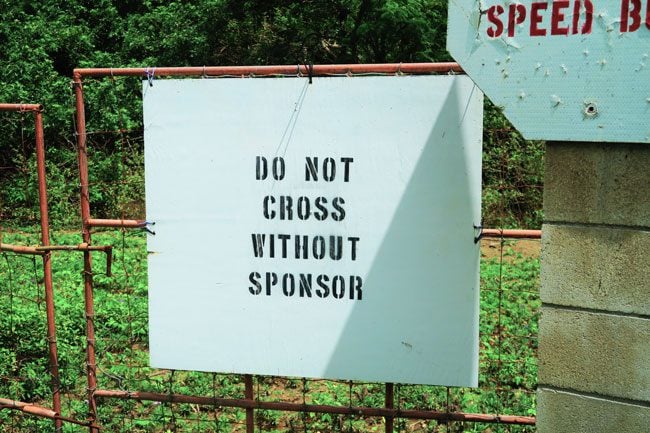
The various ways to visit Kalaupapa
There are three ways of visiting the Kalaupapa Peninsula.

At the time of updating this Molokai itinerary, the trail to Kalaupapa is closed. Until it reopens, the only way to reach Kalaupapa is by air. Please check if the trail has reopened when planning your visit to Molokai.
Hiking to Kalaupapa
I strongly recommend hiking to Kalaupapa if you are in good physical condition. The 3.5-mile trail starts easy, with a 1664 ft descent on a well-marked trail. It takes about one hour to get down to the beach via 26 switchbacks and 1,400 steps. The views along the way are superb, and you can stop whenever you want, as there’s hardly anyone to share the trail with. The challenge, of course, is getting back up. Take it slowly on the return leg and allow at least 90 minutes.
Logistics
Wear comfortable shoes and sweat-repelling clothing. Pack light rain gear just in case, lunch, snacks, and water (can refill), and leave a complete change of clothes in the car. Bring walking poles if it helps you. You can park your vehicle at the trailhead (see map), aiming to start hiking by 8-8:30 am. That way, you’ll avoid sharing the trail with the convoy of mules heading down, which also involves negotiating their manure.
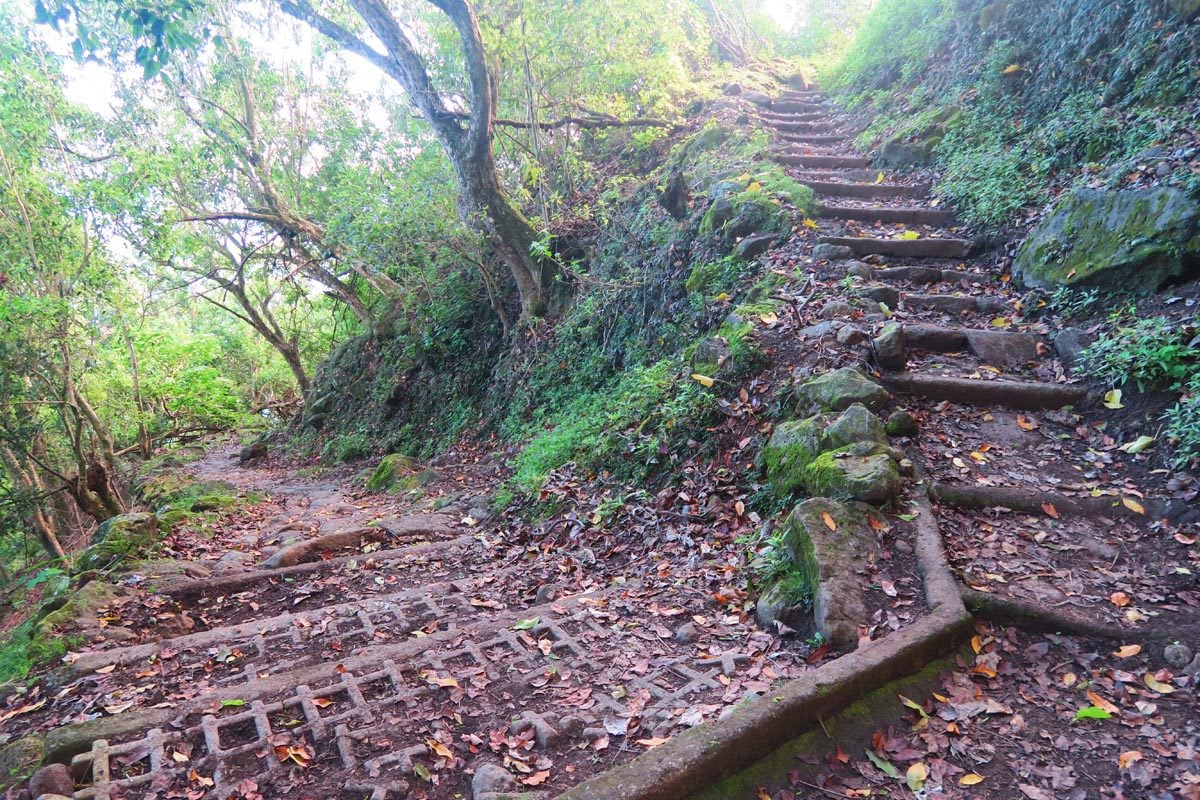
Most importantly, you must pre-book a tour with Father Damien Tours and meet your guide at a designated signposted area, more or less at the end of the trail. I was fortunate to have Rick Schonely as my guide. He was super knowledgeable about the history of the place and was really into his job, not to mention he’s a talented singer and plays the ukulele.
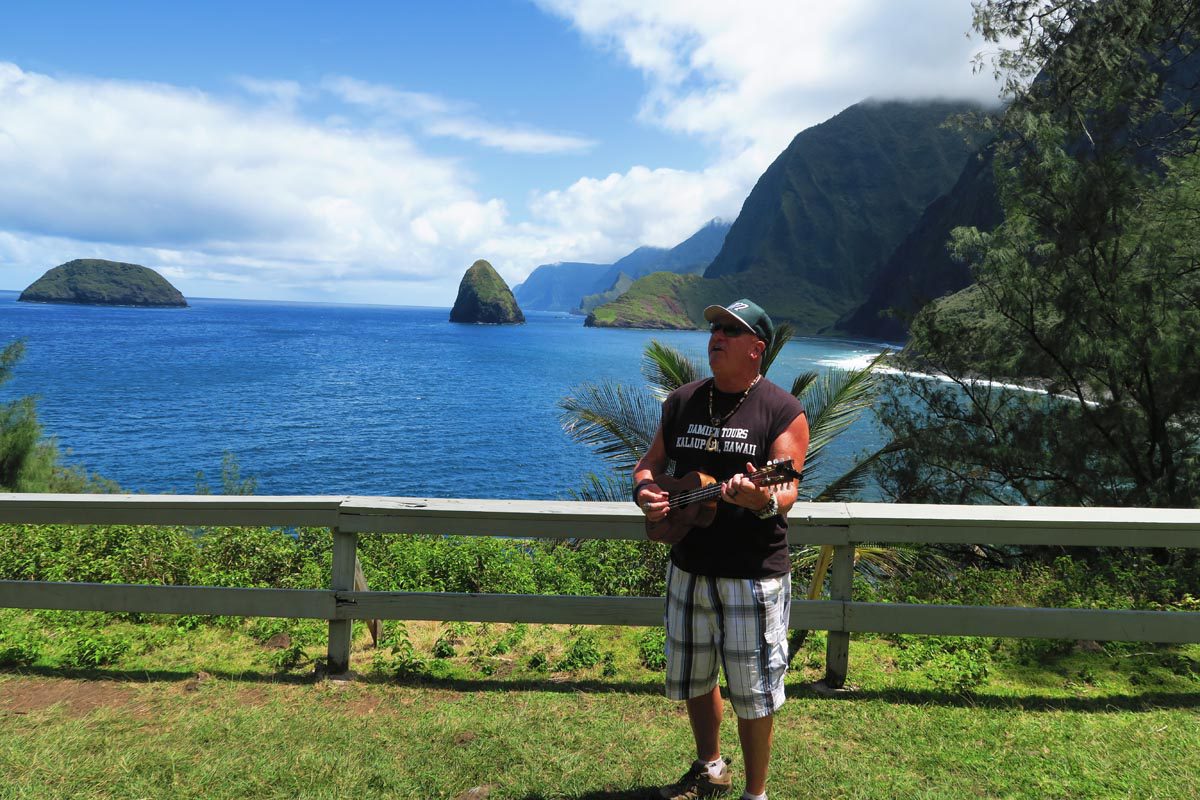
You might be able to book a slightly cheaper self-guided tour. After getting a map from one of the guides at a designated meeting point, you can explore parts of Kalapapa at your own pace. I don’t recommend this option if it’s still offered due to the added benefit of learning the history of Kalaupapa from a certified guide and visiting the scenic Kalawao section (it is simply too far of a walk).
Mule ride to Kalaupapa
Using a mule to reach Kalaupapa and back up is an optimal way if hiking is too challenging. Inquire with Kalaupapa Mule Tour but be sure to read the fine print and confirm your departure the day before.
Flaying to Kalaupapa
Fly to Kalaupapa with Mokulele Airlines from the “topside” airport in Molokai. It’s more like dropping down to Kalaupapa from the island’s main airport. Book return tickets or hike down and book a one-way ticket for the return leg.
what to see in Kalaupapa
Here are some of the sites you’ll visit in the Kalaupapa Peninsula as part of your guided tour.
Kalaupapa Beach
Kalaupapa Beach is one of the best beaches in Hawaii and there will likely not be a soul around here when you visit. The half-sandy, half-rocky beach offers a great view of the Pali Coast of Molokai with its towering sea cliffs. This is a good spot to kill a few hours if you’re early for your guided tour.
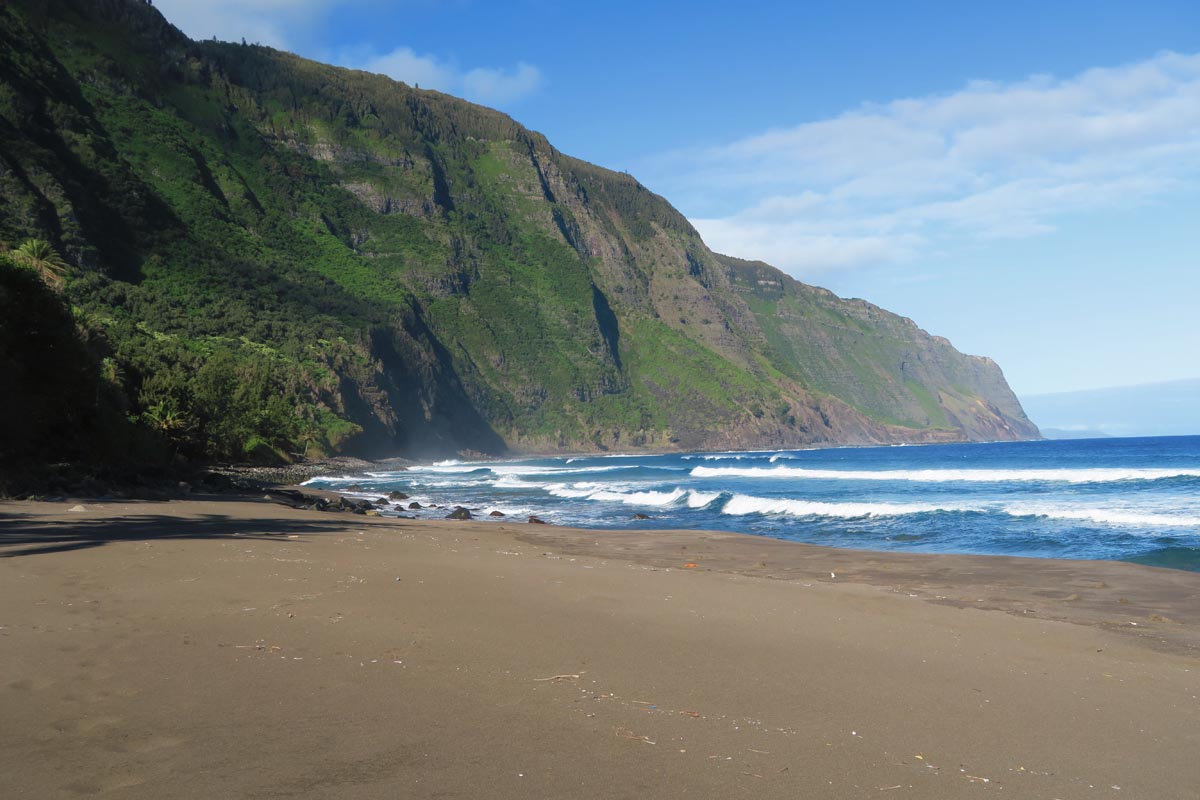
Kalaupapa Village
Your guide will then lead you on an air-conditioned ride through the village, where you’ll make several stops. You’ll notice how organized this place is, with a post office, infirmary, and even a tiny bar. Most, if not all, of the buildings, were once used by patients and have since been restored and are now used by either the remaining residents or by park staff and volunteers.
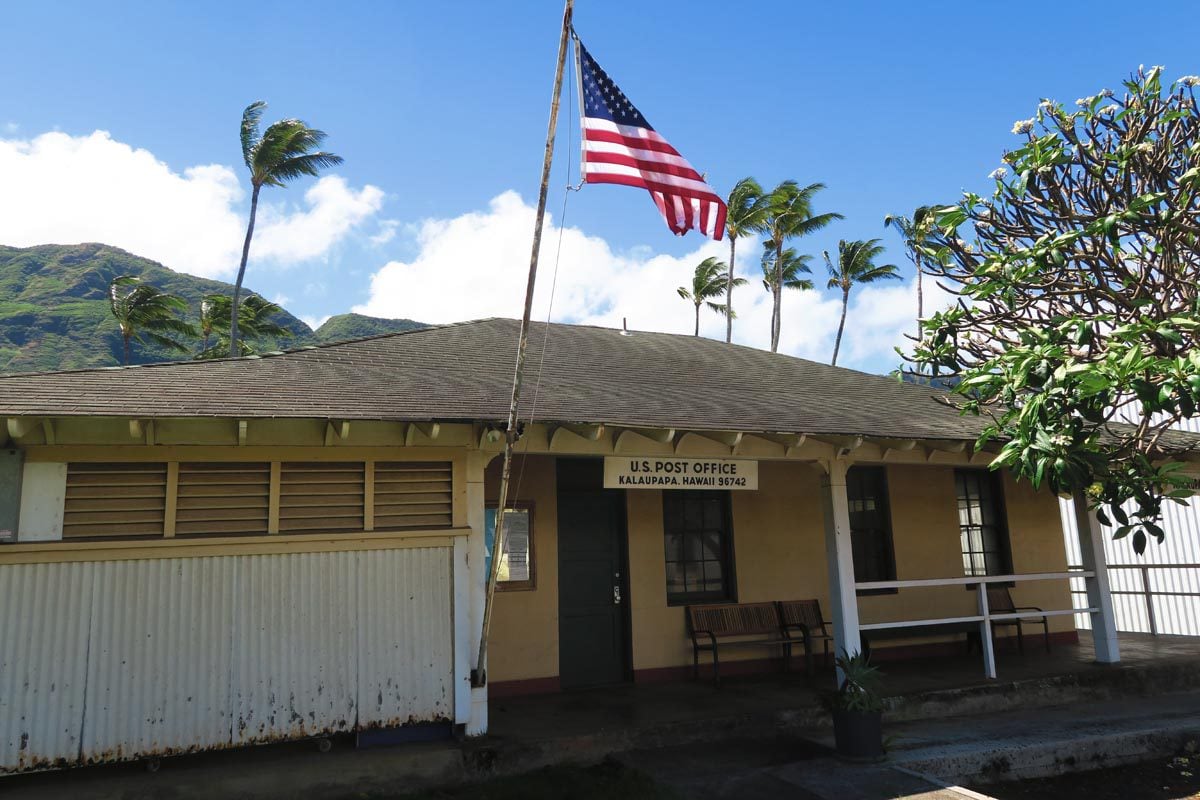
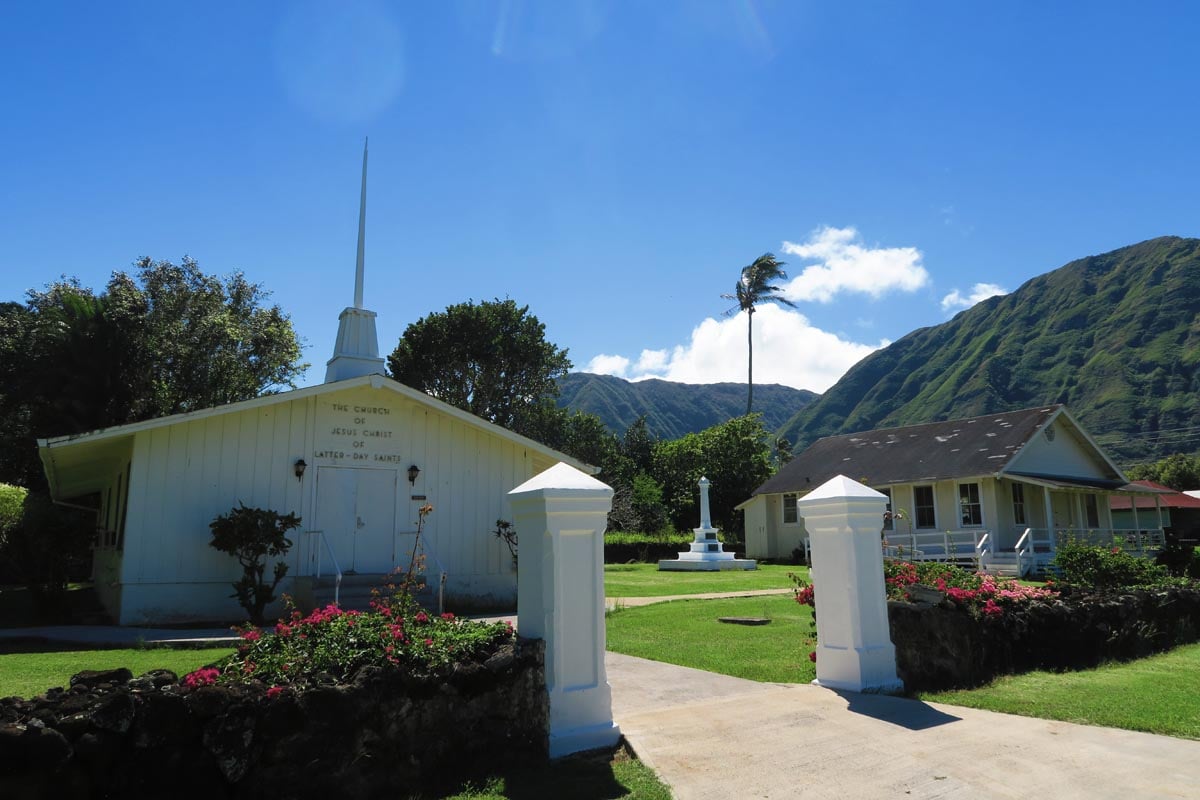
You might visit the bookstore and get to meet Boogie if he’s still around. Boogie is one of the few residents who likes to meet visitors. He’s lived here for a few decades and now runs the bookstore, where you can buy a few cool souvenirs that help run this place. Over at the Bishop House, you’ll meet the resident sister, who will show you around and share the story of the former girls’ home established by Mother Marianne.
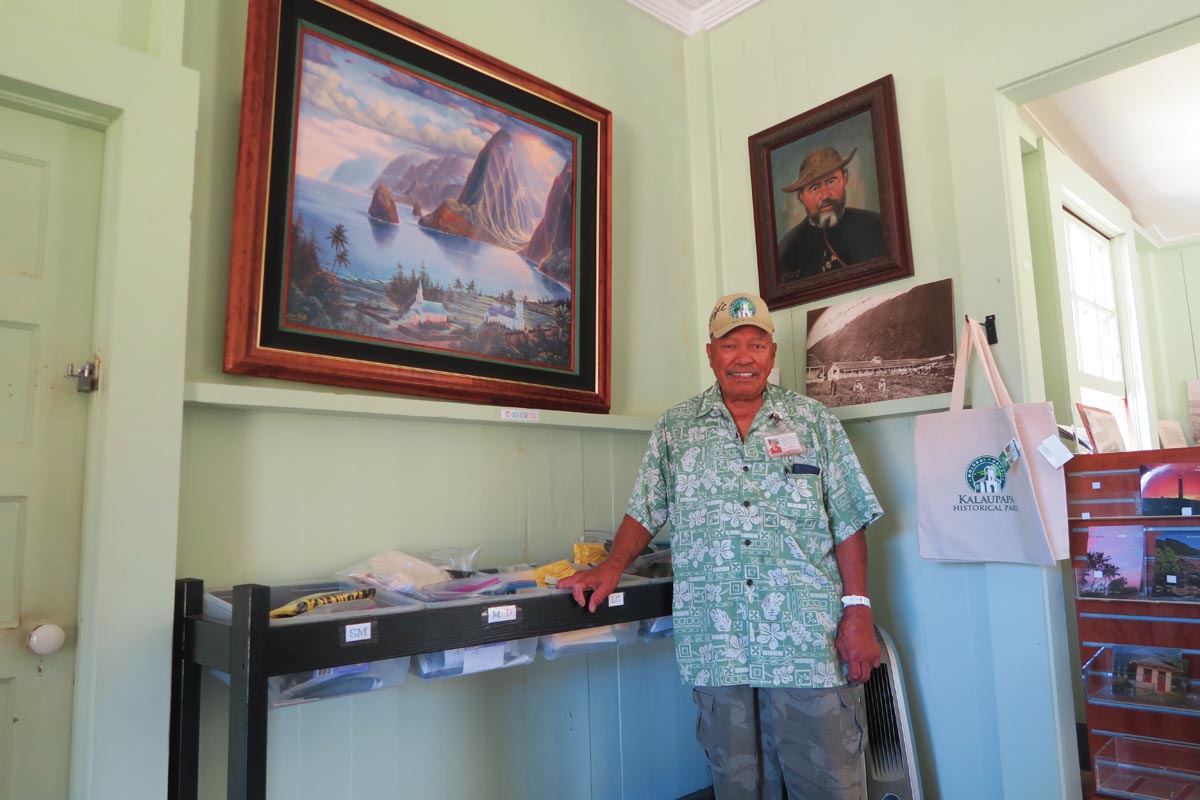
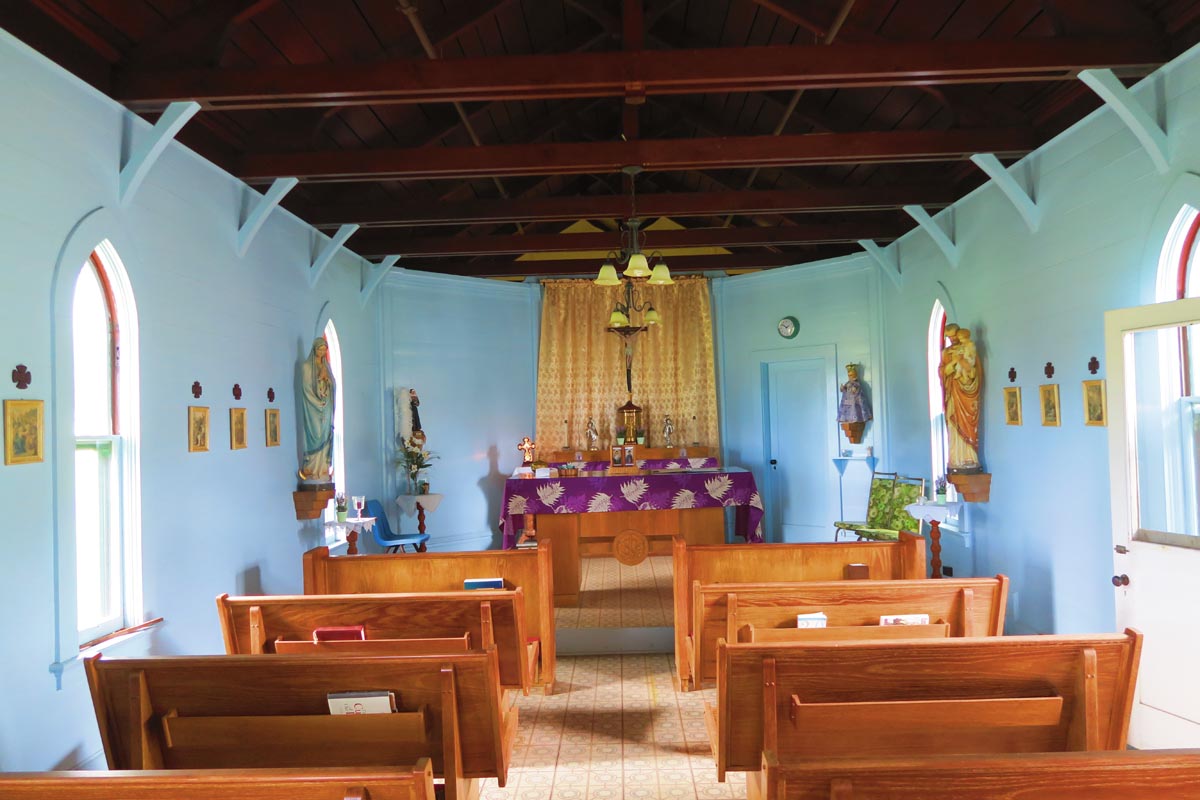
You’ll also stop at the scenic Kalaupapa Landing – the only port on the peninsula. The views from here are, once again, incredible, and you might even spot a few whales breaching in season. If you were wondering, supply is delivered to Kalaupapa once a year on a barge sent over from Oahu. All heavy equipment, including new cars, appliances, etc, come on the barge, and its arrival in the summer months is as celebrated as Christmas (day-to-day supply is shipped via air cargo).
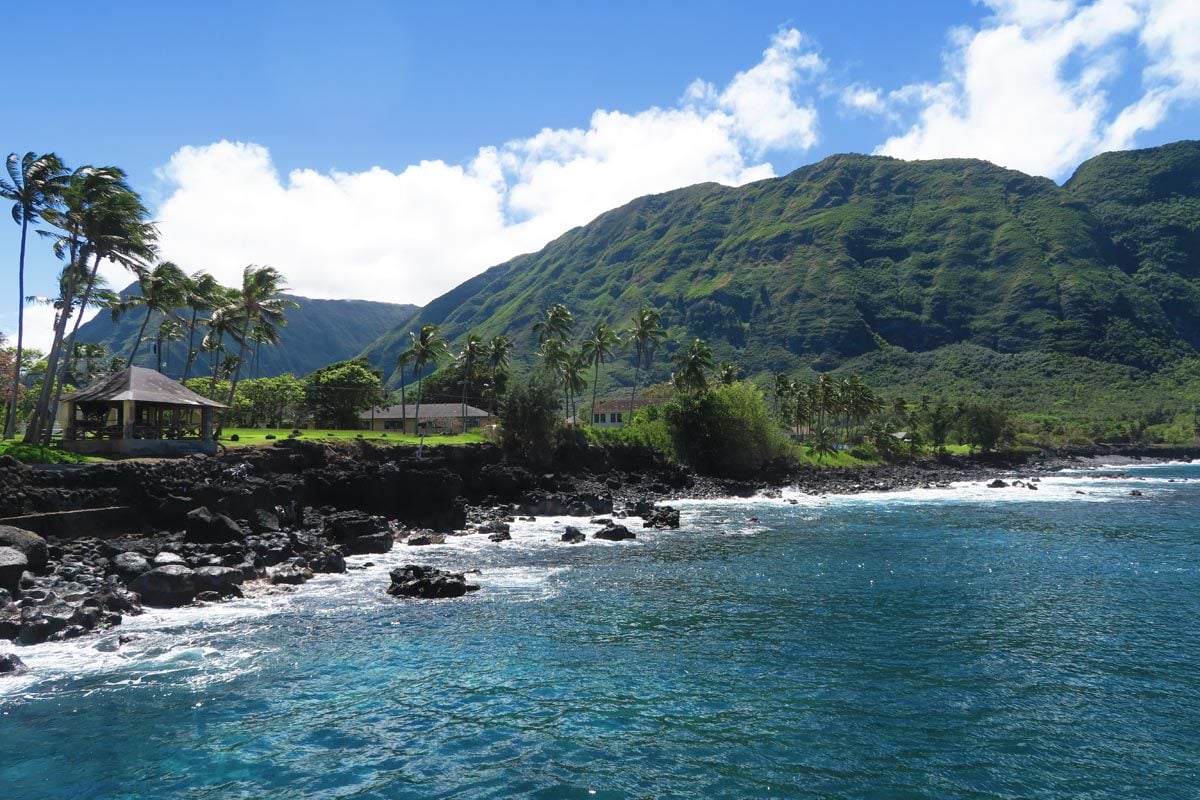
Before wrapping up the village section of the tour, pay a visit to the local cemetery and the impressive Catholic church. The church has a small museum where you can see pictures of former patients and statues of Father Damien and his “gang of saints”.
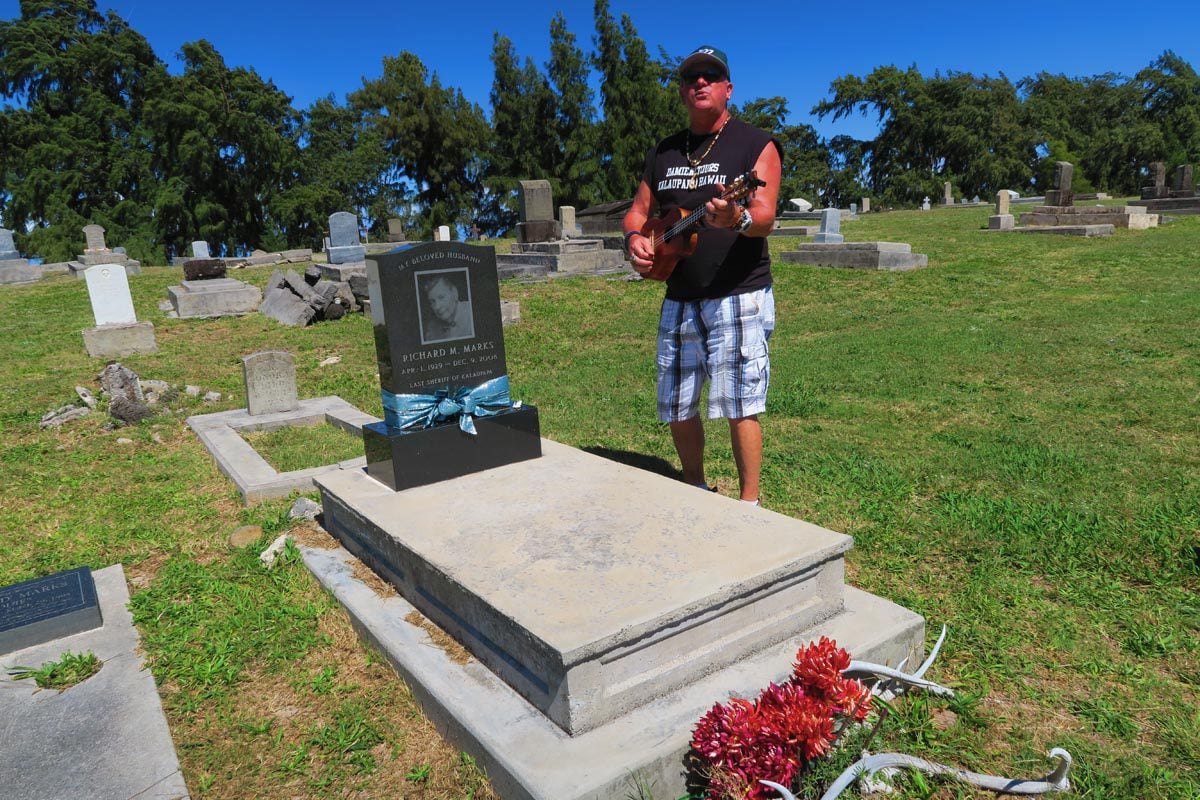
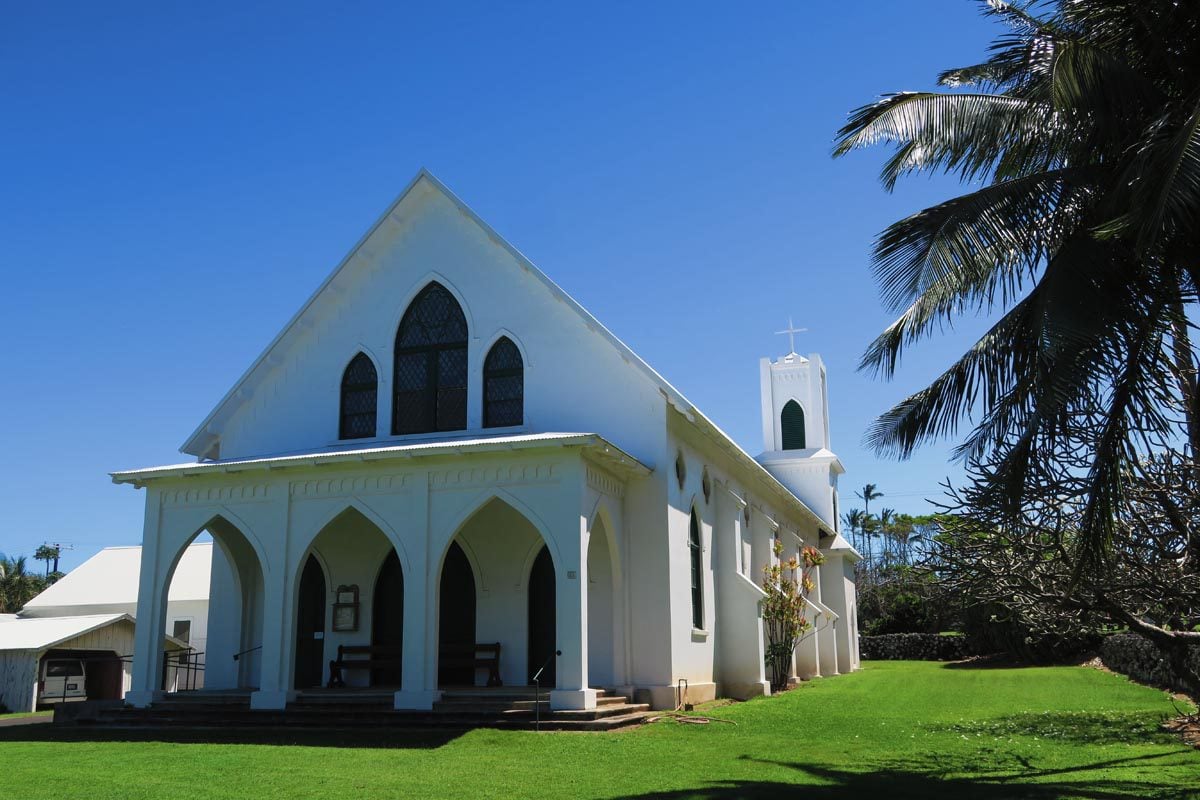
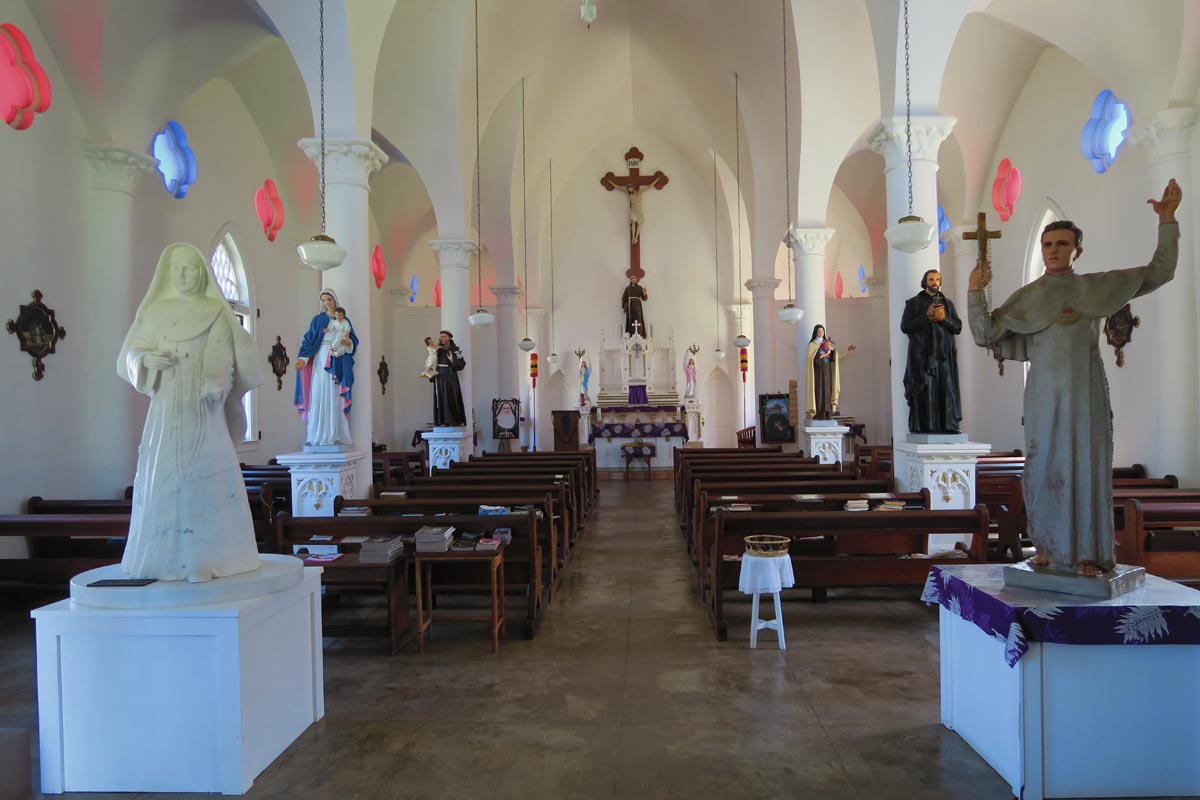
the airport & lighthouse
Next up is the tiny airport and lighthouse. This is where flights arrive and depart daily. The lighthouse is another interesting story. Keepers and their families were confined to the lighthouse during the quarantine years and were not allowed to come into contact with the patients. This extreme isolation in an already isolated place was often broken by patients who came at night to socialize with the lonely keepers. Today, locals and staff swear that visiting the lighthouse overnight guarantees a meeting with one or two spirits.
Kalawao
The tour’s highlight is the trip to Kalawao on the windward side of the peninsula. This is the site of the original settlement and where patients were “dropped off”. As you’ll soon see, it is a very wild spot. Eventually, the settlement was relocated to the leeward side of the peninsula, where the weather was a bit more friendly.
The scenic drive from the village offers incredible views of deep valleys that slice the peninsula’s interior. There are several heiaus along the way (ancient Hawaiian temples), which you’ll pause next to, and a very eerie forest where spirits are said to roam often.
Next up are the Siloama Protestant Church and St Philomena Catholic Church. The latter was built by Father Damien in 1872, and he is buried out back along with others who are rewarded with eternal scenic views. Damien’s body was exhumed and shipped back to Belgium, but in 1995, his right hand was returned and buried at this very spot.
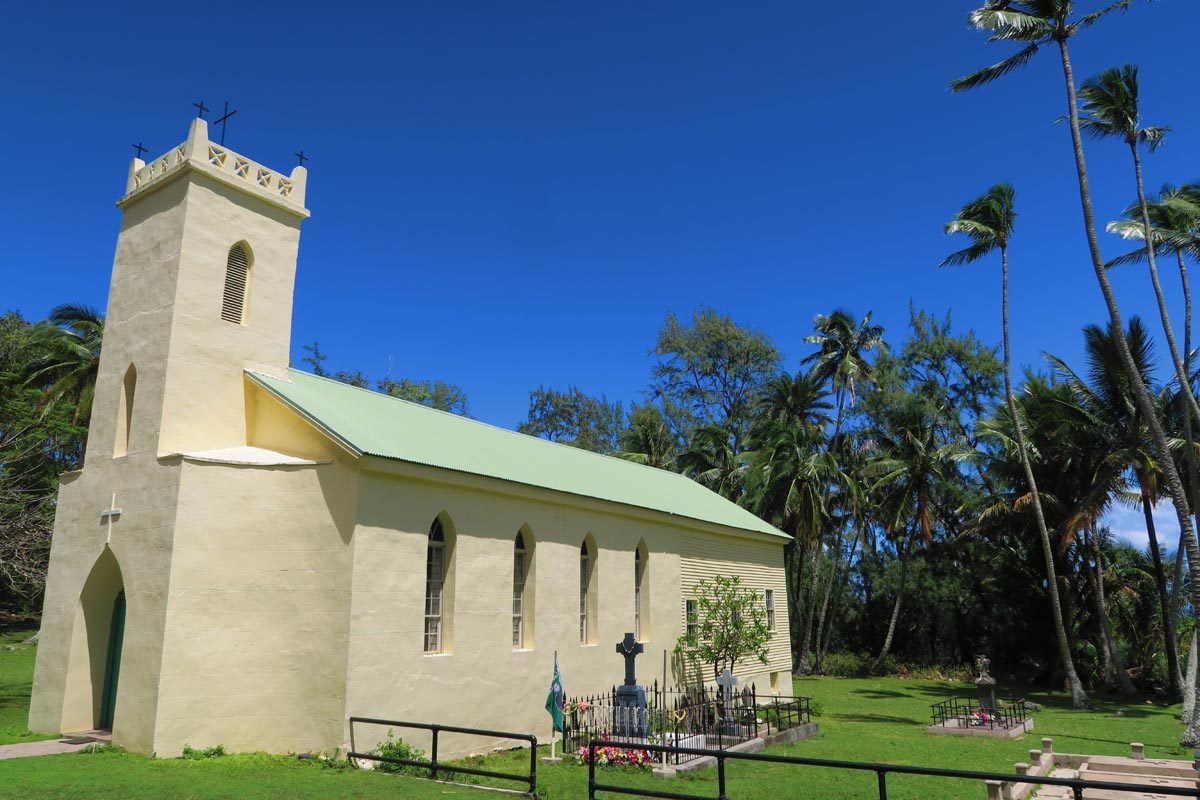
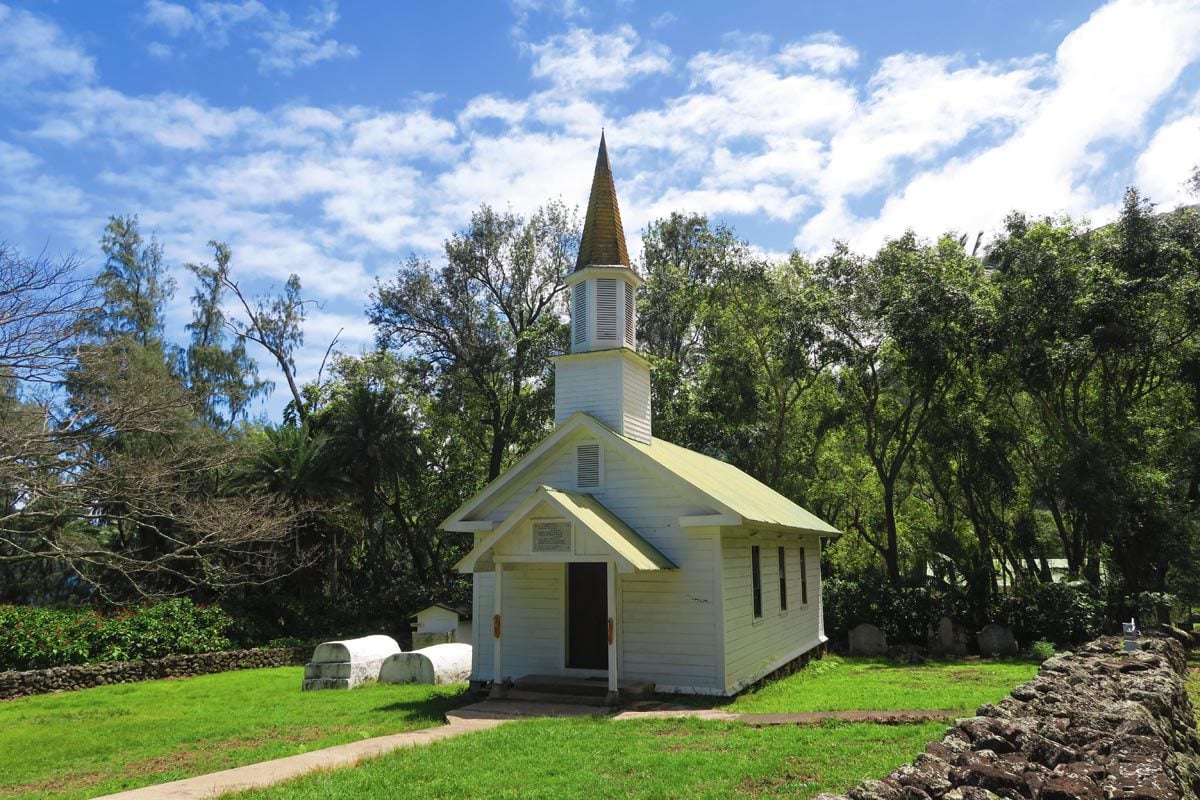
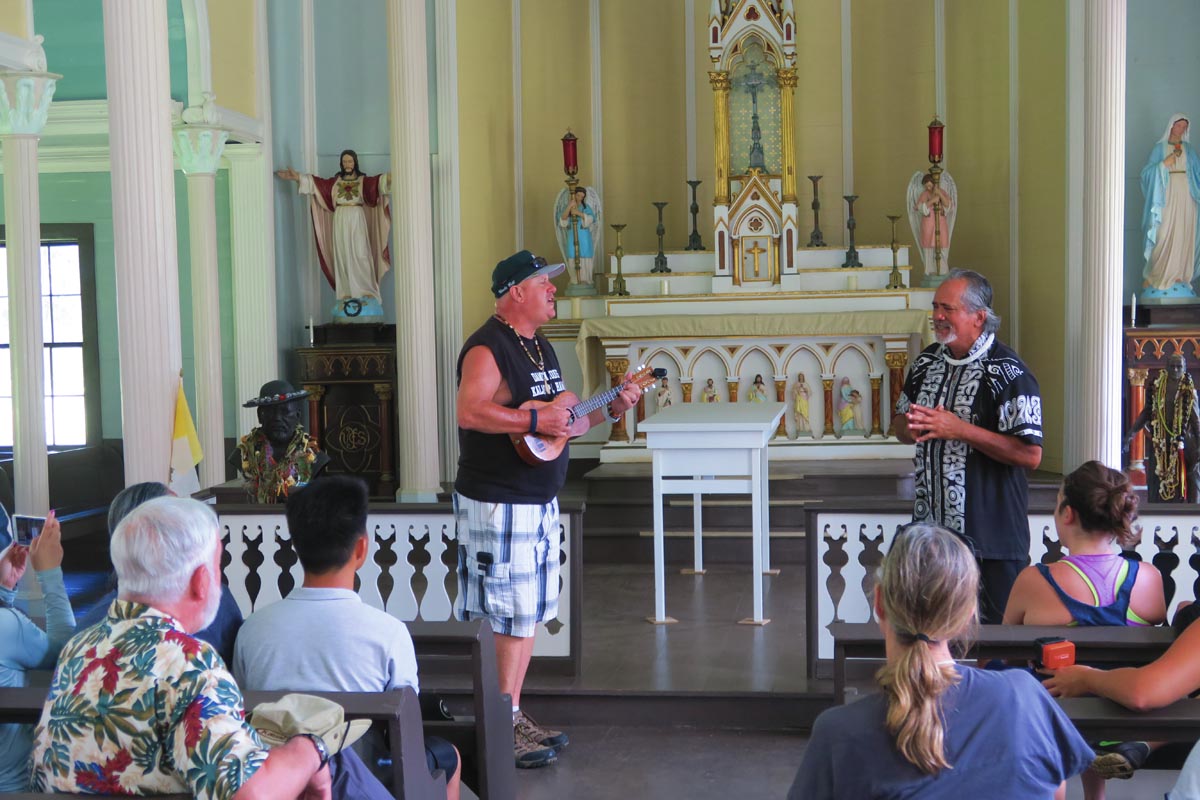
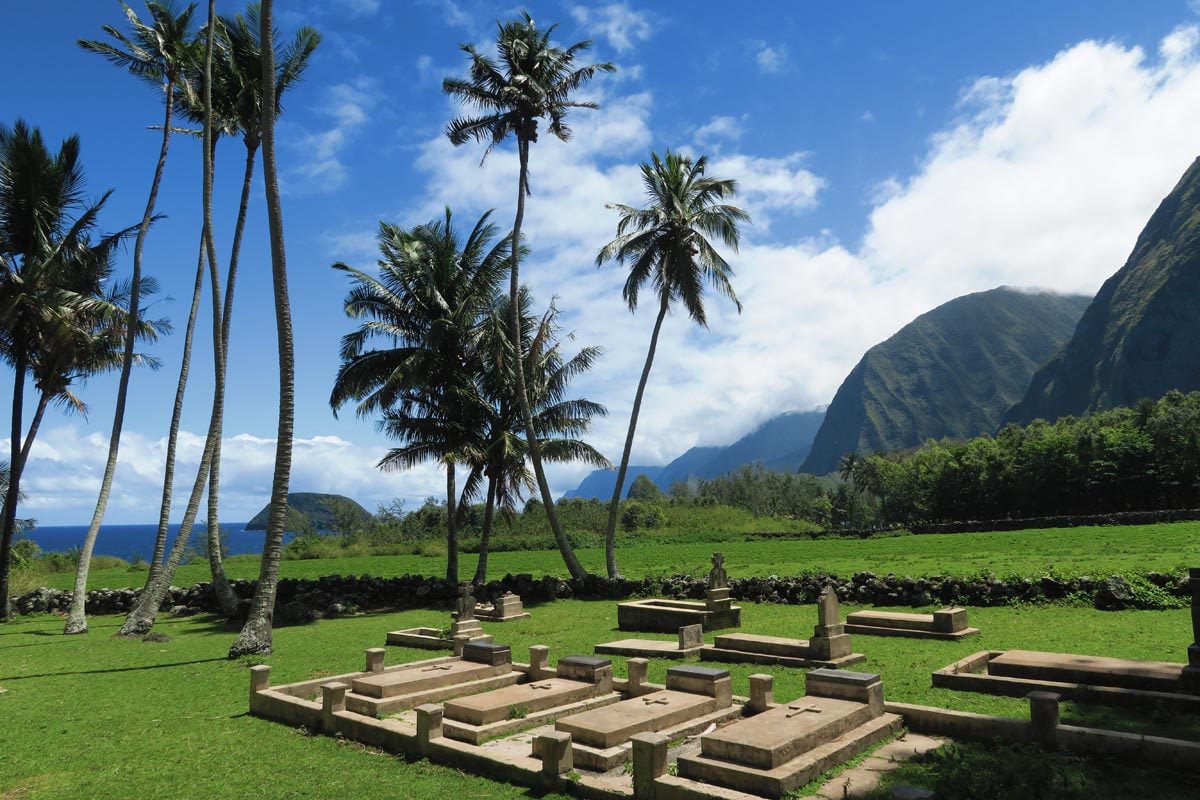
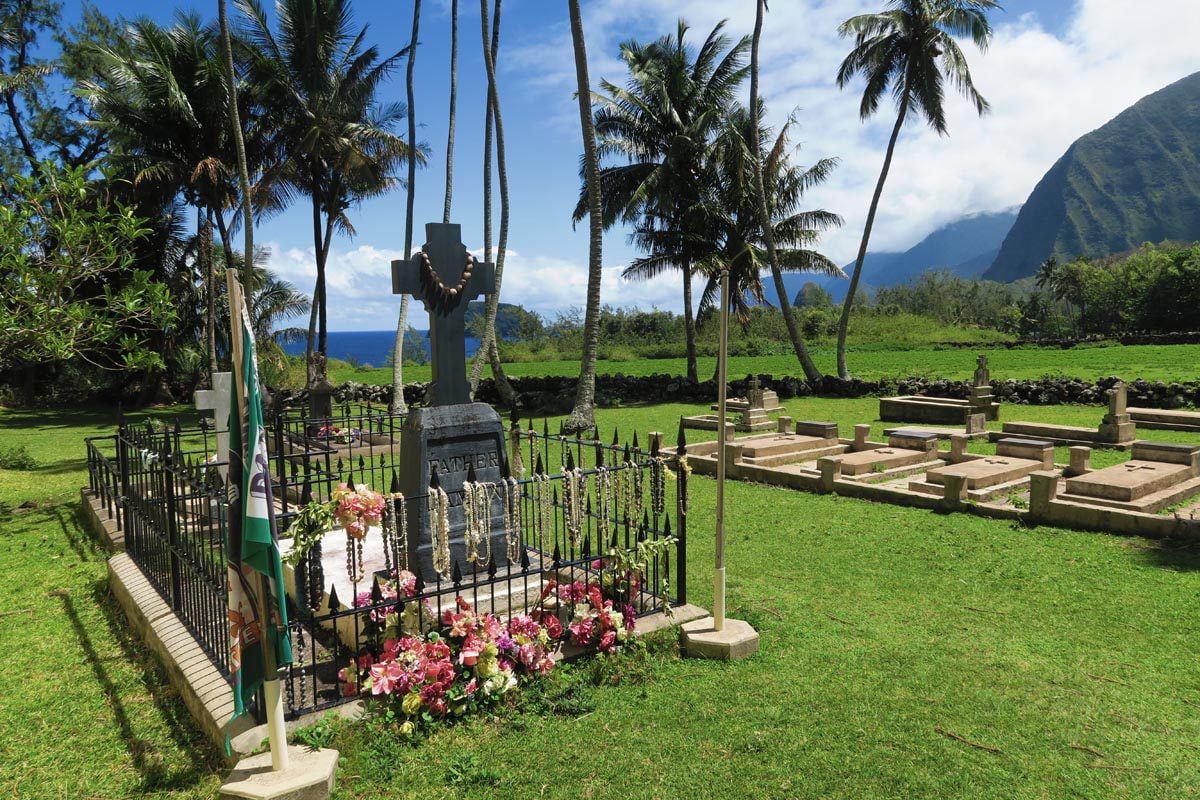
As far as scenic views are concerned, the viewpoint in Kalawao is one of the best in Hawaii (and maybe even the world). From here, you can get a good sense of the sheer size of Molokai’s Pali Coast and only imagine what it was like for terrified patients landing here in rough waters. This rugged coastline is only accessible by boat, and I’m told it hides incredible camping spots that only locals know about!
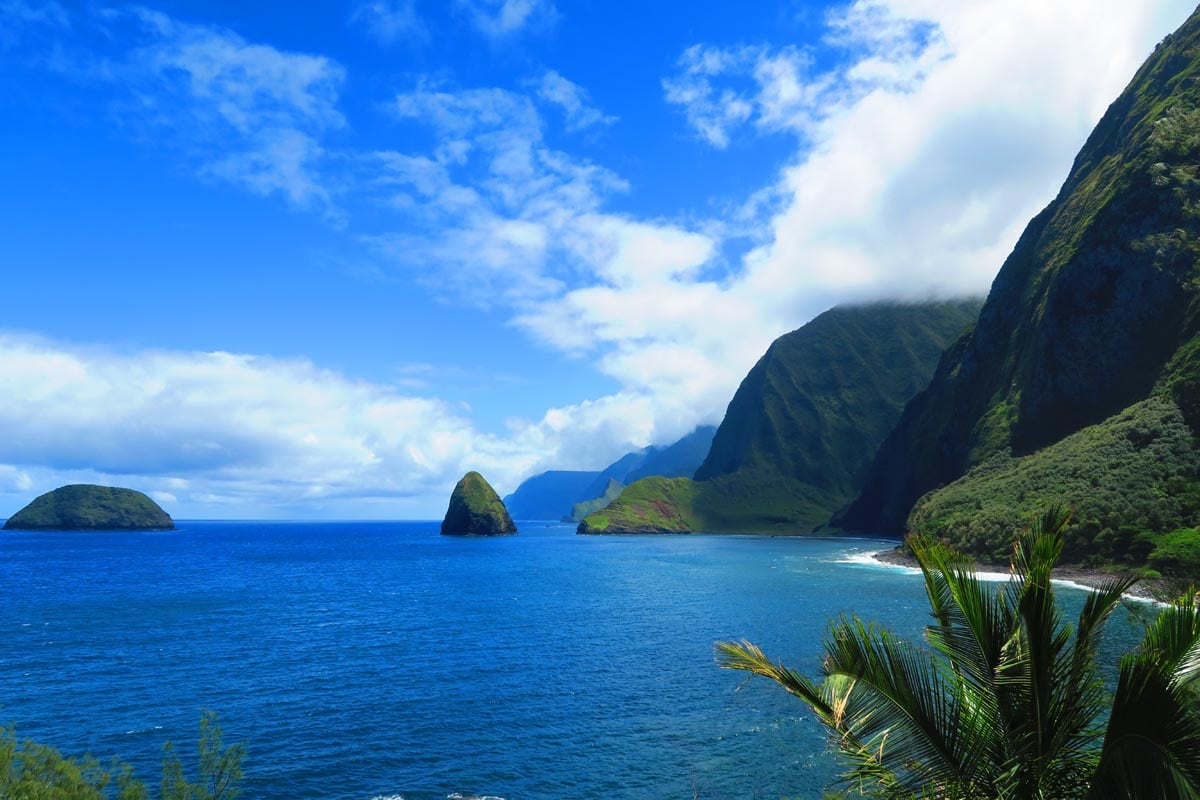
You’ll have time for lunch at the shaded picnic area by the viewpoint, so don’t forget to pack something. There is also an impressive water-filled crater not too far away, but it wasn’t accessible during my tour.
Kalaupapa Overlook
Back “topside,” drive to the end of the road and visit the Kalaupapa Overlook. The bird’s eye view from this spot is breathtaking and offers the chance to fully appreciate the journey you completed. This is an even greater must if you won’t visit the peninsula.
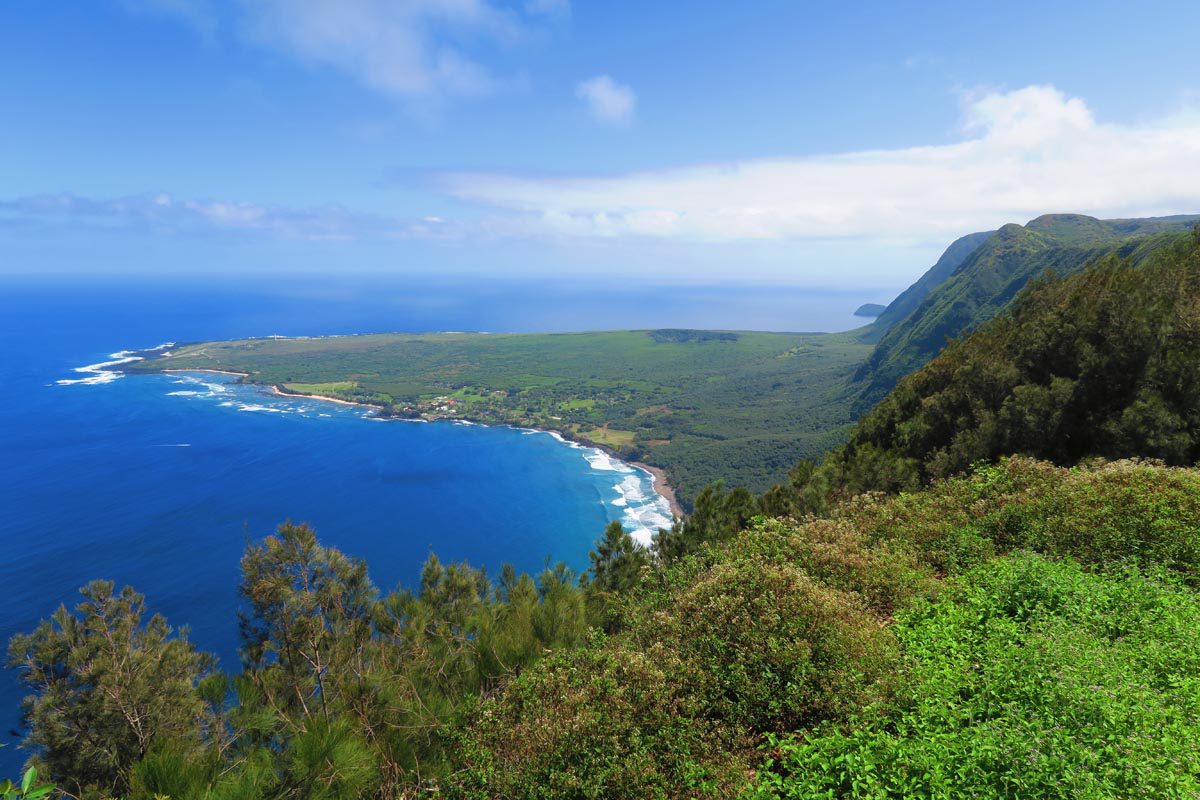
The phallic rock
Hike through the ironwood forest from the parking area for about 10 minutes to reach the phallic rock. This is a huge slab in the shape of a penis. There’s naturally an interesting Hawaiian legend behind this weird-looking boulder, but, in any case, these days, women have been known to offer the rock a flower necklace and, following an overnight stay (spooky), they find out they’re pregnant!
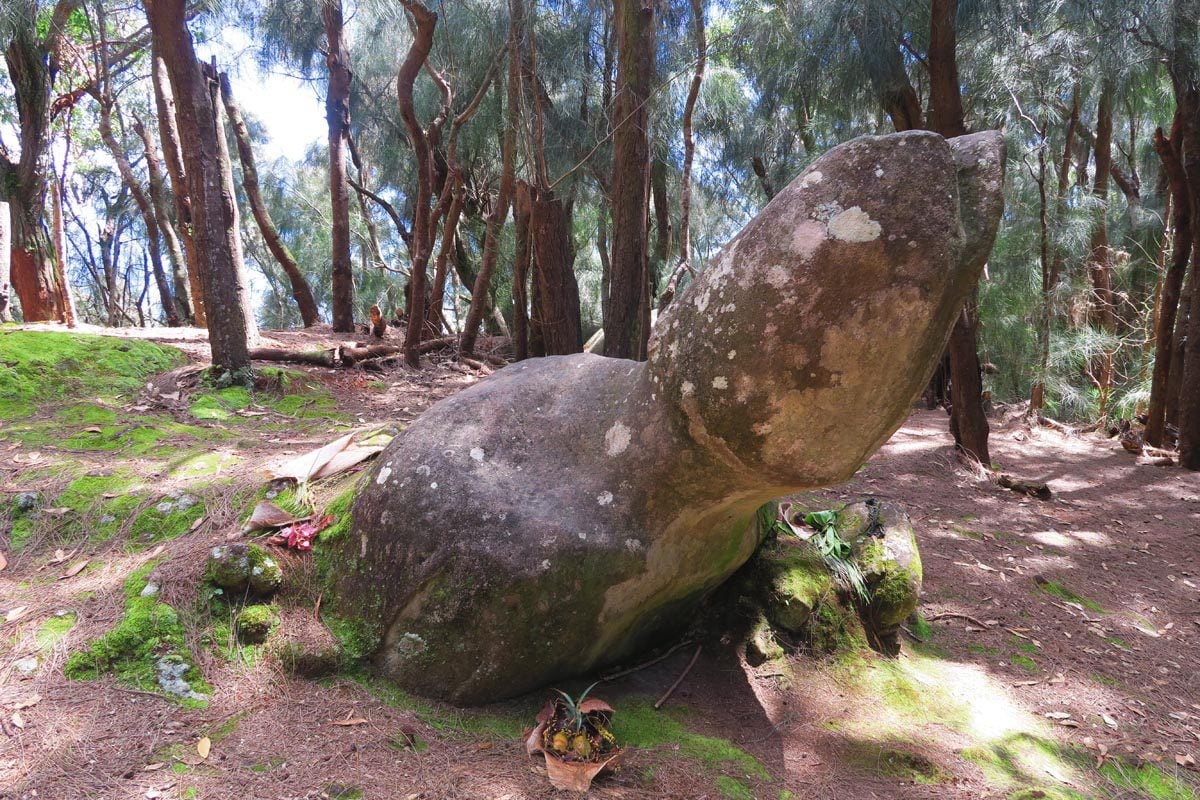
Spending the Rest of Your Day
You’ll likely wrap up the Kalaupapa chapter of the day at around 2-3 pm (including the hike and overlook visit). This leaves enough time to either head west to one of the beaches (see day three itinerary) or simply take it easy in at your accommodation. For dinner, head to Paddlers Inn. Locals and visitors come here for the excellent food and the great vibe.
